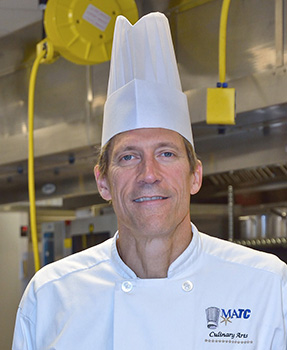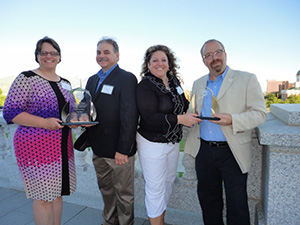Throw Out the Recipes, Part I
Wednesday, 10 September 2014 17:00
 Says this educator, ratios trump recipes in helping students learn. The first of a two-part series on teaching culinary arts through ratios in practical culinary labs.
Says this educator, ratios trump recipes in helping students learn. The first of a two-part series on teaching culinary arts through ratios in practical culinary labs.
By John Reiss, CEC, CCE
Are we training students the right way or the wrong way? That’s a loaded question, and one that culinary educators can easily become quite defensive about. The knock in culinary education often comes from professional chefs who say we aren’t training students to be seasoned and productive when they graduate.
Having taught in the industry for more than 25 years, I have often pondered and debated with peers over best practices for preparing students to be job-ready when they finish their studies. I have come to the conclusion that maybe there is a better pedagogical approach, one that involves the use of culinary ratios.
We often teach students practical competencies through the aid of recipes. Why? It’s true that recipes are important to some extent in the kitchen, but most professional kitchen work relies on intuitive cooking, standardized techniques and procedures and proper mise en place, rather than recipes.

 Foodservice educators across North America earn recognition for their creativity in the culinary classroom.
Foodservice educators across North America earn recognition for their creativity in the culinary classroom. The first part in a three-part series discussing tried-and-true and novel assessment ideas, as well as common methods whose usefulness in your program might be dated. Plus, how to customize and apply lesser-known, but effective, assessment strategies to fit your program.
The first part in a three-part series discussing tried-and-true and novel assessment ideas, as well as common methods whose usefulness in your program might be dated. Plus, how to customize and apply lesser-known, but effective, assessment strategies to fit your program. These very simple techniques are not taught more often in a 50-minute context because the blanched or parboiled product is generally not ready for service by the end of class. But, says Chef Weiner, they’re important to teach for their contributions to cooking. Here, he explains how to best teach the procedures, with applications that can fit perfectly into 50 minutes.
These very simple techniques are not taught more often in a 50-minute context because the blanched or parboiled product is generally not ready for service by the end of class. But, says Chef Weiner, they’re important to teach for their contributions to cooking. Here, he explains how to best teach the procedures, with applications that can fit perfectly into 50 minutes.